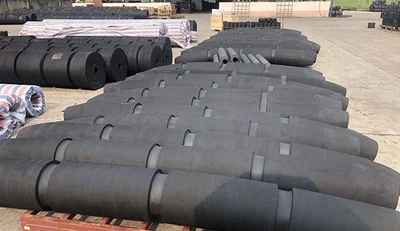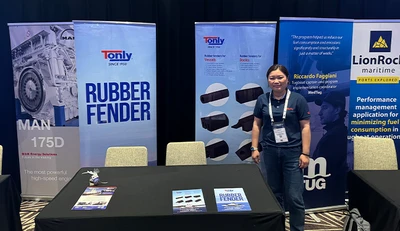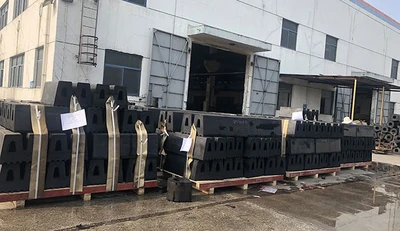The quality of D-type rubber fenders always restricts production and use, interferes with docking and the safety of ship drivers, and affects the schedule of production ships. This is not an accidental operation management problem. In order to solve these problems, it is first necessary to analyze and study the best measures for fender design and material manufacturing. In the following, we hope to conduct an in-depth discussion on its design, manufacturing and use, and further strengthen the quality selection and decision-making awareness of D-type rubber fenders.
According to the conditions, the rubber D-type rubber fender vulcanization process can be divided into room temperature vulcanization and low temperature vulcanization. Low temperature vulcanization can be used for vulcanized film products, soaking it in a carbon disulfide solution containing 2% to 5% sulfur chloride, and then washing and drying. When vulcanized at room temperature, room temperature vulcanized cement (mixed rubber solution) is used for repair, bicycle inner pipe joints, etc. Hot vulcanization is a method of vulcanizing rubber products. According to different vulcanization media and vulcanization methods, thermal vulcanization can be divided into direct vulcanization, indirect vulcanization and aeration vulcanization.
Direct vulcanization is to put the product directly into hot water or steam medium vulcanization. Indirect vulcanization, the product is vulcanized in hot gas, usually used for some products with strict appearance. For mixed gas vulcanization, air vulcanization is carried out first, followed by direct steam vulcanization. This method overcomes the shortcomings of steam vulcanization, affecting the appearance of the product, and the shortcomings of long-term thermal curing due to slow heat transfer and easy aging of hot air.
The spacing and height of the D-type rubber fenders are very important. It must be ensured that the ship will not directly contact the pier wall at the most unfavorable berth angle allowed by the rope, and that the ship can safely rely on different tidal water levels and different air currents, mooring equipment It is very suitable for docking ships of different tonnages.
 Guidelines for the Maintenance of Rubber FenderDecember 16, 2024The marine rubber fender is a very important maintenance item in the ship's post. However, all ships sailing must be equipped with marine fenders, so as to ensure the personal safety of the person...view
Guidelines for the Maintenance of Rubber FenderDecember 16, 2024The marine rubber fender is a very important maintenance item in the ship's post. However, all ships sailing must be equipped with marine fenders, so as to ensure the personal safety of the person...view Four methods to repair damaged tug fenderDecember 16, 2024The main raw materials of tugboat fenders are natural rubber compound and rubber nylon cord, which can avoid tearing, damage, scratching, puncture and other parts during use. Our rubber fenders are re...view
Four methods to repair damaged tug fenderDecember 16, 2024The main raw materials of tugboat fenders are natural rubber compound and rubber nylon cord, which can avoid tearing, damage, scratching, puncture and other parts during use. Our rubber fenders are re...view TONLY Participates International Tug & Salvage Community 2025March 11, 2025TONLY Participates International Tug & Salvage Community 2025view
TONLY Participates International Tug & Salvage Community 2025March 11, 2025TONLY Participates International Tug & Salvage Community 2025view Co-vulcanisation and dispersion with rubber fendersDecember 16, 2024At the same vulcanisation speed, general purpose rubber is fastest with natural rubber, followed by isoprene rubber, butadiene rubber, latex polybutadiene rubber and styrene butadiene rubber. Slow vul...view
Co-vulcanisation and dispersion with rubber fendersDecember 16, 2024At the same vulcanisation speed, general purpose rubber is fastest with natural rubber, followed by isoprene rubber, butadiene rubber, latex polybutadiene rubber and styrene butadiene rubber. Slow vul...view